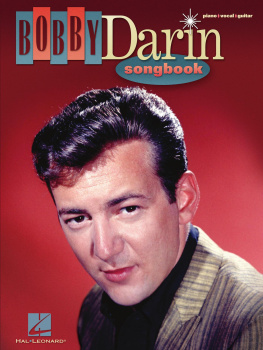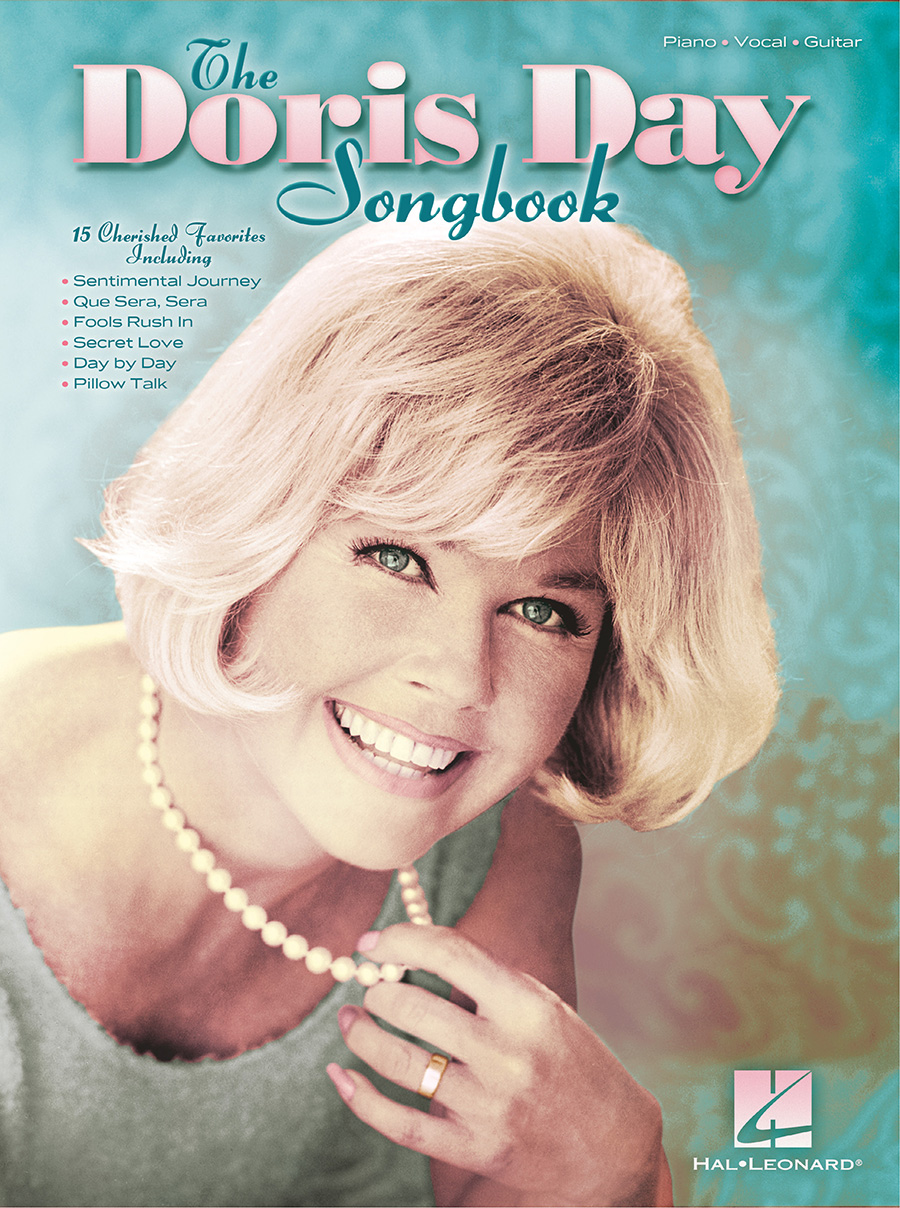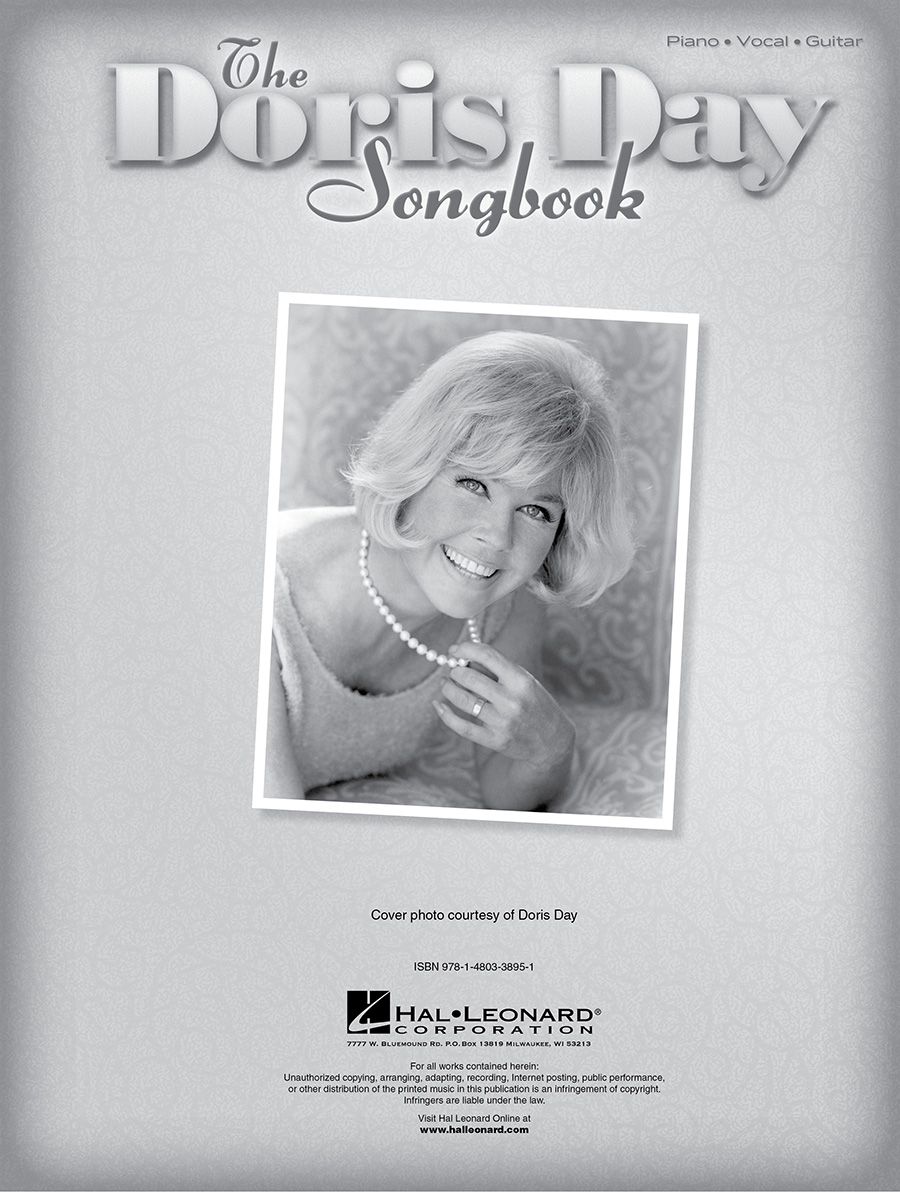Doris Day, the quintessential all-American girl, continues to be revered by her fans, while the media still celebrate her as an actress and singer with a legendary Hollywood girl next door image.
However, Doris Days personal life, faced with steely resolve, was the very antithesis of how most fans perceived her super-stardom. The studios promoted her in screen roles highlighting her wholesome, vivacious blonde personality. However, in hindsight, this concentration on her image belied her great acting and musical talents; a full retrospective appraisal of her career in recent years has brought her fans a fuller appreciation of her gifts. Of her 39 films, Calamity Jane , Love Me or Leave Me and Pillow Talk remain popular favorites, and still run frequently on cable television. Paralleling her success in big-screen entertainment, a series of excellent albums recorded between 1956 and 1968 expanded her popularity and are as relevant today as when they were first released.
The Singer
Born Doris Mary Ann Von Kappelhoff on April 3, 1924, in Cincinnati, Ohio, her parents came from German stock. Her father, Frederick Wilhelm Von Kappelhoff, was a music teacher, choir master and church organist and loved classical music. Her mother, Alma Sophia Welz, on the other hand, was an outgoing woman who enjoyed hillbilly music. Doris was the youngest of three: she had two brothers, Richard, who died before she was born, and Paul who was a few years older. She was named after silent movie actress Doris Kenyon, whom her mother admired. Growing up in the 1930s, Doris was attracted to music and dance, eventually forming part of a dance duo which performed locally until a car she was riding in was struck by a train, crushing her right leg, a severe injury that curtailed her ambition to become a professional dancer.
However, while recovering, Doris gained a vocal education by listening to the radio, becoming a fan of the earliest records of upcoming Ella Fitzgerald. Her mother encouraged her to take singing lessons. Alma took Doris to see vocal coach Grace Raine, who was so impressed with Doriss natural talent that she offered her three lessons for the price of one. Doris credits Raine with impressing upon her the importance of delivering a lyric, and today Doris says that Raine had the greatest impact on her singing career.
At age 15, Doris began performing locally and while working with local bandleader Barney Rapp, she adopted the stage name Day after Rapp suggested Kappelhoff was too long and cumbersome for marquee appeal. After leaving Rapp, Doris worked with a number of other band leaders, including Bob Crosby, and was eventually hired by Les Brown. She had two stints with Browns band, with marriage to trombonist Al Jordan, birth of her son Terry and subsequent divorce in between. Her 1945 hit, Sentimental Journey, co-written by Brown and recorded with his band, was made at the ideal time, as it reflected the thoughts of weary troops as they returned home from service in Europe and the Pacific.
She was every bandleaders dream, a vocalist who had natural talent, a keen regard for the lyrics and an attractive appearance. Les Brown
Following her second hit record with Brown, My Dreams Are Getting Better All the Time, Doris went solo with a contract from Columbia Records in 1947. Her radio work (with Bob Hope and later Frank Sinatra) lead to separation (and eventually divorce) from second husband George Weidler. Weidler could see that Doris was becoming a notable personality, and he did not want to be known as Mr. Doris Day. His request for a divorce came via letter while she was performing at the Little Club in New York.
The Actress
Ill remember this to my grave. We all walked into a room to see the screen tests. The first screen test was Marion Huttons. Then came Janis Paige [who ended up with a part in the film]. Then on the screen came Doris Day. I can only tell you, the screen just exploded. There was absolutely no question. A great star was born and the rest is history. Sammy Cahn
Still despondent over her divorce, Doris reluctantly accepted an invitation to sing at a Hollywood party attended by songwriters Jule Styne and Sammy Cahn. She was asked to sing and gave a tearful, emotionally charged rendition of Embraceable You. So impressed was Styne that he arranged for a screen test. This lead to her first movie, Romance on the High Seas (1948), with director Michael Curtiz, who placed Doris under a personal contract for further films at Warner Brothers. Tea for Two (1950), Lullaby of Broadway (1951), On Moonlight Bay (1951), By the Light of the Silvery Moon (1953) and Calamity Jane (1953) were among the popular musicals that helped Doris sell hit records like Its Magic and Secret Love. The occasional dramatic role, such as in the dark Storm Warning (1950) and musical melodrama Young Man with a Horn (1950), proved Doris had natural acting talent.
On a personal level, Doris married her agent, Marty Melcher, in 1951. He subsequently handled her career as her producer, and decided not to renew her contract with Warner Brothers after the completion of Young at Heart in 1954. As a freelance actress, Doriss range of roles increased. She made the bio-pic Love Me or Leave Me , based on the life of 20s singer Ruth Etting, in 1955 for MGM; it was hailed as a triumph for both her singing and acting. She followed this with Alfred Hitchcocks T he Man Who Knew Too Much (1956), which teamed her with James Stewart and included location work in Morocco and London. On set, Doris asked Hitch why he wasnt giving her any direction. His response was simple: Because you are doing everything just right, he said.
Doriss recording of Que Sera, Sera (Whatever Will Be, Will Be) was used as an innocuous plot device in the film, and won an Oscar for Best Song. When Doris later recorded Que Sera, Sera for Columbia, it became such a massive hit, it was henceforth perceived as her signature number. Today Doris casually admits to initially disliking the song!
Doris returned to Warner Brothers for the film version of Broadway hit The Pajama Game in 1957. She was ideally cast as a feisty union shop-steward in a pajama factory, and the film included great songs that kept the action buoyant. Doris starred in comedies with Clark Gable, Jack Lemmon, Richard Widmark and David Niven. Then, in 1959, Doris paired with Rock Hudson in Pillow Talk for Universal. This role gained her a Best Actress Oscar nomination and a Golden Globe Award and began a run of sophisticated romantic comedies. The onscreen chemistry between Doris and Hudson led to two more films, Lover Come Back and Send Me No Flowers . That Touch of Mink (1962), with Cary Grant, lacked the same screen chemistry that was so apparent with Hudson, but the glow was back when she teamed up with James Garner in The Thrill of It All (1963) and Move Over Darling (1963). The dramatic Midnight Lace (1960), with Rex Harrison, was an emotionally draining role for Doris. As for musicals, Jumbo gave Doris the lovely Rodgers & Hart score to sing, but the circus story based on a 30s Broadway spectacle was too old-fashioned to make any impression in 1962.
Doris was voted Top Box-Office Female Star for four straight years during the early 60s, and was among the Top 10 for ten straight years. Her record has never been matched, but fickle tastes eventually rejected such frothy fun for Hollywoods more explicit sex and darker themes. By mid-decade her box-office appeal had slipped a few notches, but Melcher continued to star Doris in light-weight fare with Move Over Darling and The Glass Bottom Boat (1966), the best of the bunch thanks to Doriss personable appeal. Ironically, her final movie, With Six You Get Egg-Roll (1968), gave an indication that roles nearer her actual age might be the way forward.

















